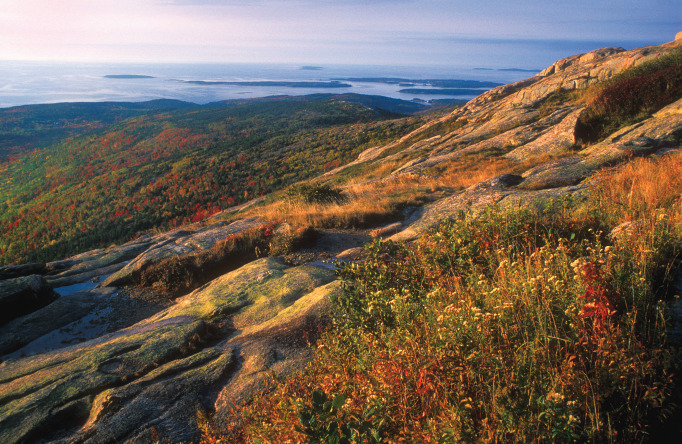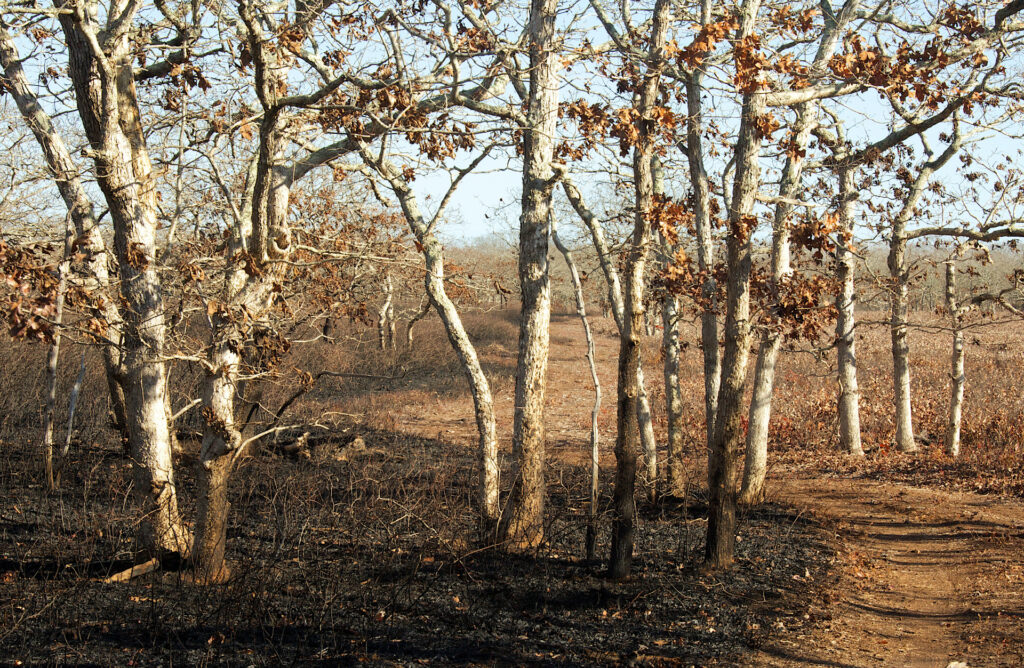
What are Wildlands?
Wildlands are tracts of any size and current condition, permanently protected from development, in which management is explicitly intended to allow natural processes to prevail with “free will” and minimal interference. Humans have been part of nature for millennia and can coexist within and with Wildlands without intentionally altering their structure, composition, or function. (definition from Wildlands in New England: Past, Present, and Future)
As a complementary strategy to protecting Woodlands (actively managed forests) and Farmlands, there are myriad reasons to protect Wildlands. Wildlands have immense intrinsic value. They mitigate climate change by removing and storing vast quantities of carbon; they improve resilience to climate-related disasters; they maintain and increase biodiversity; and they offer quiet space for spiritual and physical renewal. Wildlands also serve as ecological baselines, and they are a central component of 30×30, an effort by the global community to protect 30 percent of the lands and waters of the earth by 2030 to address the looming crises of biodiversity, climate change, and human welfare.
Today, 81% of New England is forested, yet only 3.3% of the region is considered Wildland. This dramatic gap is igniting a movement for policy makers, conservation organizations, landowners, and communities to conserve more Wildlands. The Wildlands in New England report offers a strong base for this movement, helping both public and private landowners and stewards not only to determine which land can be designated as Wildland but also to take the steps to ensure that more forever-wild land is protected.
92% of Wildland acres are considered climate resilient compared to 67% of other protected lands and 47% of unprotected areas.
Source: Wildlands in New England: Past, Present, and Future 1

Wildlands Checklist
The Wildlands Checklist below provides a set of criteria and questions to help determine if a property may be considered a Wildland.
What makes a property a Wildland?
The Wildlands definition includes a full spectrum of geography and size, ranging from small, local reserves in urban and suburban areas to expansive landscapes in more remote places. All of these provide important functions.
Current condition is not a criterion. A land’s “wildness” derives not from its history but from its freedom to operate untrammeled, today and in the future.
A property must meet all three of the following criteria to be considered a Wildland.
- Wildland Intent
- Management for an Untrammeled Condition
- Permanent Protection
Each of the three criteria is described in more detail below, with checklist questions to help evaluate whether a property satisfies the criteria.
Criterion #1: Wildland Intent
The property has a deliberate Wildland purpose.
There must be a deliberate Wildland purpose or goal stated in the documents designating, enforcing, and guiding property management. Further, the controlling entity must have the authority and long-term capacity to enforce this intent.
Consider all of these questions when deciding if the property meets the first criterion.
Checklist Questions
Criterion #2: Management for an Untrammeled Condition
The property is allowed to age freely under prevailing environmental conditions and natural processes with minimal human intervention.
These processes may include climate change, natural disturbances, and the arrival of new species. Management is not motivated by any explicit outcome and does not seek to either guide ecosystem development or shape ecosystem structure, function or composition.
Note that variation in the interpretation and response to the range of issues confronting land managers differentiates organizations and ultimately determines whether a property is a Wildland or not.
If the answer is “yes” to all three of the questions below, the property meets the second criterion. There are some exceptions which are outlined below.
Checklist Questions
Exceptions to untrammeled condition:
- Maintenance of old woods roads and former skid roads used infrequently for supervision or motorized travel between properties. (Regularly actively used motorized ways will be excluded from the Wildland parcel.)
- Active maintenance of cultural artifacts and legacies of Indigenous people, early colonial settlers, and others, including stone walls, cellar holes, rock mounds, cemeteries and burial sites, and abandoned equipment.
- Management for invasives and rare species under exceptional conditions and utilizing highly focused methods.
- Maintenance of pre-existing remote campsites or small seasonal structures.
- Initial removal of human-made structures or other infrastructure and landscape modifications that are viewed as constraining ecological processes or otherwise restricting the self-willed expression of nature. Such structures may include bridges, culverts, drainage ditches, dams, pavement, railroad tracks, etc.
- Maintenance of low-impact hiking and walking trails to facilitate human experience and enjoyment, with low intensity maintenance, preferably using hand tools.
- Control of fires, and fire prevention, conducted so as to minimize impact to soils, hydrology, and biota.

Criterion #3: Permanent Protection
Wildland intent and management are in perpetuity or are open-ended but expected to persist.
The strongest standard for Wildland protection is that which is in perpetuity, legally defensible, and enforced by a third party or legal mechanism. However, no mechanism is perfect and not all Wildlands have this level of security. Because of this gradient in security, documented clear intent, agency policies, management plans, agreements, administrative decisions, mission statements, and/or a history of past actions that demonstrate indefinite protection may allow for a property to meet this criterion.
If the answer is “yes” to one or more of the questions below (not necessarily all), the property meets the third criterion.
Checklist Questions
Submit a Property to the Wildlands Database
The wide variation among conservation properties and the mechanism securing them precludes easy categorization and requires that each property be examined individually by our research team and revisited over time. Visit the Wildlands in New England Interactive Webmap to see existing individual Wildlands properties in our database.
Please submit a location for us to review if:
- You are aware of a property in a New England state that you believe meets the criteria and should be included as a Wildland in our database.
- You are aware of a property that is currently designated as a Wildland, but does not meet the criteria.
To access the complete Wildlands in New England report, executive summary, maps, state summaries and other related materials, visit wildlandsandwoodlands.org/wildlands-in-new-England.
- Foster, D., E. E. Johnson, B. R. Hall, J. Leibowitz, E. H. Thompson, B. Donahue, E K. Faison, J. Sayen, D. Publicover, N. Sferra, L. C. Irland, J. R. Thompson, R. Perschel, D. A. Orwig, William S. Keeton, M. C. Hunter Jr., S. A. Masino, and L. Howell. 2023. Wildlands in New England. Past, Present, and Future. Harvard Forest Paper 36. Harvard University.
